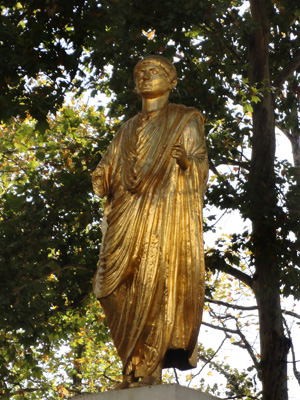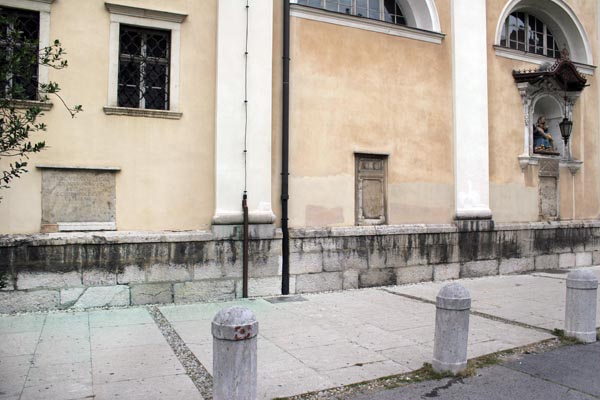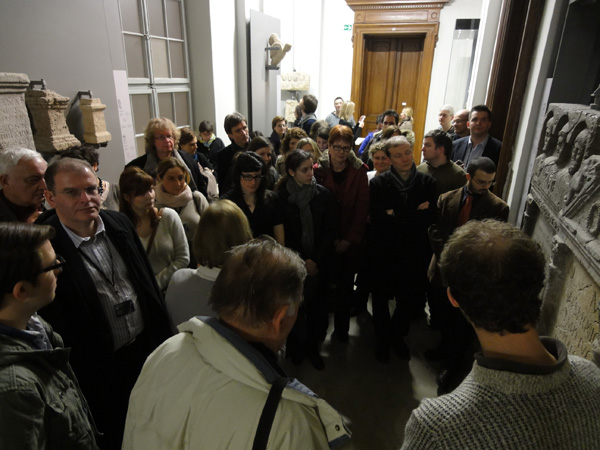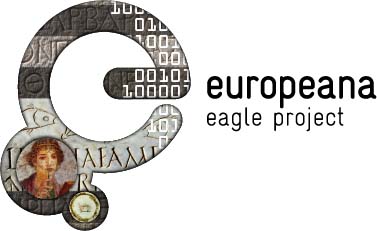EAGLE - Electronic Archive of Greek and Latin Epigraphy
Principal Investigator at ZRC SAZU
Marjeta Šašel Kos, PhD-
Original Title
EAGLE - Electronic Archive of Greek and Latin Epigraphy
-
Acronym
EAGLE
Project Team
Anja Ragolič, PhD, Mateja Belak-
Duration
1 April 2013–30 March 2016 -
Lead Partner
Università degli Studi di Roma "La Sapienza" - Piazzale Aldo Moro 5, 00185 Roma…
Partners
Oxford University, Universidad de Alcalà, British School at Rome, Gogate Srl, promoter s.r.l., Universitatea Babes Bolyiai - Cluj Napoca, Università degli Studi di Bari “Aldo Moro”, Consiglio Nazionale delle Ricerche – Istituto di Scienza e Tecnologie dell’Info…, Eötvös Loránd University Budapest, Ruprecht-Karls-Universitaet Heidelberg, Deutsches Archäologisches Institut, Eureva, Institut Ausonius, Université de Bordeaux III - CNRS, The Cyprus Istitute, Sveučilište Jurja Dobrile Pula, Katholieke Universiteit Leuven, Paris-Lodron-Universitaet Salzburg
EAGLE - Europeana network of Ancient Greek and Latin Epigraphy is a federation of four main epigraphic databases:
- EDB (Epigraphic Database Bari),
- EDH (Epigraphisches Datenbank Heidelberg) and
- HEpOnline (Hispania Epigraphica Online).
EAGLE MediaWiki – Winner in the category Best DH Tool or Suite of Tools (DH Awards 2016 - http://dhawards.org/dhawards2016/results/).

Togatus from Emona
It is a project whose aim is to provide access to all the inscribed documents on stone, metal, and other materials known from the ancient world in their original form, aggregating content coming from different digital repositories, and putting them at disposal of Europeana, where this kind of documents is still lacking.

The Thalnischer Lapidarium
EDR (Epigraphic Database Roma) vključuje napise antične Italije in rimskih provinc Sicilije in Sardinije.
Pincludes all the inscriptions coming from the territory within the ancient boundaries of Italy, and the former Roman provinces of Sicily and Sardinia; partners of this part of the project are the institutions of Slovenia (Institute of archaeology, ZRC SAZU) and Croatia (Juraj Dobrila University of Pula), responsible for the digitizing of the almost 1500 inscriptions known from the Roman towns of Emona and Pola, formerly part of the 10th Italian region Venetia and Histria.

View of the old lapidarium in the National Museum of Slovenia
Moreover, all these databases are linked with other already existing digital projects, one of which is: Ubi erat lupa, a photographic database put in charge of the university of Salzburg, which includes about 30.000 digital photos, already linked with EDH and Hispania Epigraphica on line, and on the way to be linked with EDR and EDB.
***
The first in a series of international events planned by EAGLE Best Practice Network Current Practices and New Directions in Digital Epigraphy was held in Ljubljana on 19th and 20th February 2014.

Visit to the lapidarium of the National Museum of Slovenia during the first international Eagle workshop (Ljubljana, 19–20 Febr. 2014)
***
ŠAŠEL KOS, Marejta, The Disappearing Tombstone and Other Stories from Emona, Ljubljana 2015.
RAGOLIČ, Anja, Epigraphy as a tool for learning Latin: the case of the Prežihov Voranc Primary School in Ljubljana, Slovenia. V: ORLANDI, Silvia (ur.). Information technologies for epigraphy and cultural heritage : proceedings of the first EAGLE international conference, (Collana Convegni, 26). Sapienza: Università Editrice, 2014, str. 205-220, ilustr. http://www.eagle-network.eu/wp-content/uploads/2015/01/Paris-Conference-Proceedings.pdf. [COBISS.SI-ID 38282541]





